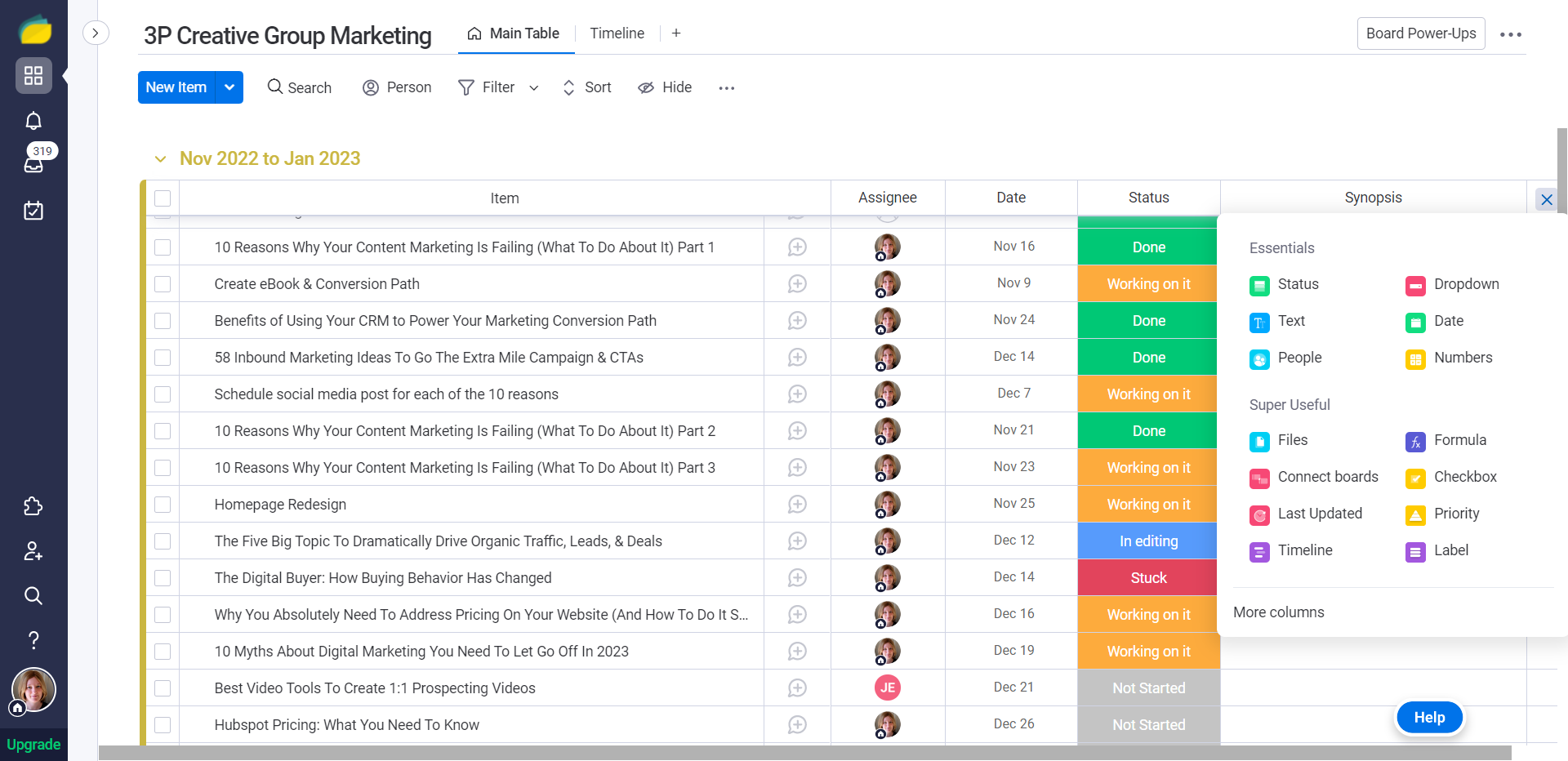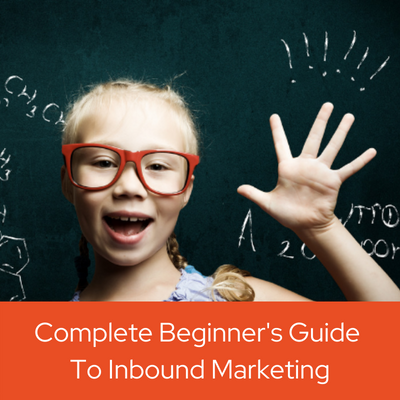How To Set Up An Editorial Calendar Your Team Actually Uses
Content marketing and content writing are essential for any business that wants to remain competitive in today's digital landscape. An editorial calendar can help organize your team's efforts, ensuring everyone is on the same page when creating quality content.
Let’s dive into what it takes to build a successful editorial calendar!
Topics Covered In This Article:
- What Is An Editorial Calendar?
- How To Set Up An Editorial Calendar Everyone Will Use
- 3 Elements That Make An Editorial Calendar Successful
- Collaborating With Sales On Content Ideas
- Editorial Calendar FAQs
What Is An Editorial Calendar?
Definition Of An Editorial Calendar
An editorial calendar is a tool to plan, organize, and schedule content topics you will publish over a certain period of time (e.g., monthly). It helps teams create an organized workflow to stay on top of their content production goals. It outlines what type of format the content will be produced in (e.g., written blog article, podcast, video, etc.), when each piece should be published, and who will be responsible for creating it.
An editorial calendar can be used for all types of marketing activities, including social media posts, blog articles, email campaigns, and more. It provides an overview of what needs to be done and when. This ensures that content is created on time and distributed effectively across multiple channels.
They can be created in various formats, such as spreadsheets or online project management tools like Monday.com, Trello, Basecamp, etc.
Benefits Of Using An Editorial Calendar
Having an editorial calendar helps ensure that your team stays on track with its content creation goals by providing structure and organization to the process.
It also makes it easier to keep track of deadlines, assign tasks to team members, collaborate on ideas, measure progress against goals, and identify areas where improvements can be made to optimize results over time.
The type of content you include in your editorial calendar is dependent on the needs of your business. Possible types of content could consist of blog articles, videos, interviews with subject matter experts, infographics, e-books, webinars, and podcasts.
How To Set Up An Editorial Calendar Everyone Will Use
Choosing The Right Tool For Your Team
When it comes to setting up an editorial calendar, there are a variety of tools available. Popular options include project management tools such as Monday.com, Asana, Trello, and Basecamp or simple spreadsheets such as Microsoft Excel or Google Sheets. Depending on your team’s size and needs, you may find one tool more suitable than another.
For example, if you have a small team with simple content requirements, then using something like Excel might be sufficient; however, if you need to collaborate with multiple teams across different departments, then something like Monday.com would be better suited as it allows for greater flexibility and visibility into the process.
We happen to use Monday.com. As you can see, we are keeping it relatively straightforward.

Establishing The Right Process For Collecting Content Topic Ideas
Once you’ve chosen the right tool for your team, it’s time to establish a process for collecting content ideas that work best for everyone involved in the project.
This could involve having regular brainstorming sessions where members of each department come together and share their ideas, or even creating an online form where people can submit their suggestions anonymously, which will help ensure that all voices are heard during this process.
Additionally, depending on what type of content is being created (e.g., blog articles vs. videos), there may also be additional steps required, such as researching topics or identifying subject matter experts who can provide valuable insights into specific areas of expertise related to your business goals and objectives.
Once you have gathered all relevant information from stakeholders within your organization regarding potential content ideas, it is important to set deadlines and assign tasks accordingly.
This will ensure that everyone knows when things need to be completed by in order to meet those deadlines effectively while still allowing enough time for revisions/edits to be made to any given piece of content before publishing it live on various platforms such as social media channels, websites, etc.
Additionally, having clear expectations around who is responsible for completing certain tasks (e.g., writing copy versus designing visuals) helps keep everyone accountable throughout the entire process, which ultimately leads to higher quality results in less time overall.
What Elements Should A Basic Editorial Content Calendar Include?
A basic editorial content calendar should include the following elements:
- A preliminary working title (e.g., the specific customer question you are answering)
- Who is requesting the content to be written
- The topics or themes to be covered in each piece of content
- The type of content to be created (e.g., blog post, video, infographic)
- Who is responsible for creating the content (e.g., which team member will be writing it and who will serve as the subject matter expert)
- A timeline of when each piece of content will be published, including specific dates and times
- A way to prioritize or upvote a topic
- Status (e.g., in production, in editing, published, on hold, etc.)
In addition, more detailed editorial calendars can include:
- What channels will be used to promote the content (e.g., social media, email campaigns)
- Any other relevant details such as target audience, budget, objectives for the project/campaign, etc.
Having a clear plan allows marketers and sales teams to stay organized and ensures they produce quality work on time that meets their goals efficiently without missing any important steps along the way!
Below is a video showing you how to create a content calendar using Monday.com.
💡Remember:
When creating an editorial calendar, it is less about the tools and more about making it accessible and as easy to use as possible for all team members — because a fancy content calendar won't do any good if it isn't used!
3 Elements That Make An Editorial Calendar Successful
An editorial calendar is a critical tool for any content marketing program. It provides a framework for developing and executing content marketing initiatives and ensures that all stakeholders are on the same page.
There are three critical components of an effective editorial calendar:
- A clear understanding of your audience
- A focus on creating quality content
- A commitment to consistent publication
If you can nail these three components, you’ll be well on your way to developing a content marketing program that gets results.
1. Audience
Before you can create an editorial calendar, you need to have a clear understanding of your audience.
- Who are you trying to reach with your content?
- What are their needs and pain points?
- What kind of content will resonate with them?
Answering these questions will give you a good foundation for building your editorial calendar.
2. Quality Content
Once you know whom you’re trying to reach, you need to focus on creating quality content that will resonate with them. This means thinking carefully about the topics you want to cover, the format of your content, and the tone and voice you want to use.
It’s also essential to ensure that your content is well-researched and accurate. Nothing will turn off your audience faster than inaccurate or outdated information.
3. Consistent Publication
The final piece of the puzzle is consistency. For your content marketing program to be successful, you need to commit to publishing content regularly.
This might mean weekly, bi-weekly, or monthly, depending on your resources and goals. But whatever frequency you choose, stick to it. Consistency is vital in content marketing, and an editorial calendar can help you stay on track. Developing an editorial calendar may seem like much work, but it’s worth it. By taking the time to plan out your content marketing program, you’ll be setting yourself up for success.
Collaborating With Sales On Content Ideas
Collaborating with the sales team on content ideas is essential for creating effective content, as they are the ones talking to prospects and customers day in and day out. In our experience, content quality is significantly better when sales and marketing teams are aligned (better yet, when they are organized in revenue teams) and collaborate on building the editorial calendar.
Ask questions about what topics would be most helpful for them during the sales process, and then come up with creative ways to present those topics engagingly. This could include blog articles, videos, interviews with subject matter experts, etc. Leveraging existing assets can be beneficial when working on content ideas with your sales team.
Examples of such assets include Big Five articles, buyer's guides, case studies, and customer testimonials, which provide real-world examples that demonstrate how successful other companies have been using strategies similar to yours. This helps to build trust and credibility among potential customers or clients.
Editorial Calendar FAQs
How do I create a marketing content calendar?
Creating a marketing content calendar is an essential part of any successful inbound marketing strategy. It helps you plan, organize, and schedule all your content to ensure it’s consistent and effective.
To create a content calendar, start by setting goals for the upcoming month or quarter that align with your overall business objectives. Then identify topics related to those goals that will help attract potential customers and engage existing ones.
Once you have identified the topics, decide on the type of content (blog posts, videos, infographics, etc.) that best suits each topic. Finally, assign deadlines for when each piece should be completed and published so you can stay on track with your timeline.
By creating a well-thought-out marketing content calendar, you can easily keep track of what needs to be done and by when. This will maximize engagement from both new and existing customers while also helping reach key business objectives.
Why are editorial calendars important to content marketing?
Editorial calendars are essential for content marketing because they provide structure and organization to the creation, publication, and promotion of content. An editorial calendar helps marketers plan ahead by providing a timeline for when specific pieces of content should be created, published, and promoted.
This allows them to create more strategic campaigns that align with their overall goals. Additionally, an editorial calendar can help keep teams organized by assigning tasks to different members at appropriate times throughout the process.
Finally, it ensures consistency in terms of frequency and quality since it provides a roadmap not only for how often new content should be released, but also for what type of content is needed to meet objectives.
Overall, an editorial calendar is an invaluable tool for any successful content marketing strategy.
Conclusion
In conclusion, an editorial calendar is a powerful tool for any marketing and sales team. It helps to organize content ideas and build an effective strategy for creating different types of content.
When setting up an editorial calendar, it is essential to use the right tools, such as Monday.com, Trello, Basecamp, Microsoft Excel, or Google Sheets, to make sure your team stays organized and on track with their goals. Additionally, the collaboration between the marketing and sales teams is key to ensuring that all relevant topics are covered in the content created.
By following these tips on how to set up an editorial calendar, as well as best practices for content marketing and writing, you can maximize your success when it comes to producing quality content that drives results!
Are you looking for a way to increase your sales and marketing success? 3P Creative Group can help you.
Share this
You May Also Like
These Related Stories

How Much Does A Blog Post Cost? [1,000 Words, High-Quality, B2B, Agency vs. Freelancer]

4 Ways to Use Houzz for Your Marketing [Infographic]





Comments (3)